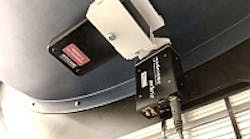Almost 70 percent of primary school children do not get their full eight hours of sleep, according to the CDC. This restricted sleep schedule has been linked with depression, behavior problems, poor performance at school, drug use, and automobile accidents. A new study from the Lighting Research Center (LRC) at Rensselaer Polytechnic Institute, and funded by Sharp Laboratories of America, concludes that exposure to morning short-wavelength blue light, or reduced evening light exposure, could help sleep-deprived adolescents deal with stress.
The study measured levels of cortisol, a hormone produced by the adrenal gland, that follow a daily 24-hour rhythm. Cortisol concentrations are low throughout the day, reaching a minimum in the evening before rising again throughout the night. In addition to the gradual elevation of cortisol at night, cortisol levels rise sharply 30 to 60 minutes after waking. This is called the cortisol awakening response (CAR). CAR appears to be associated with the time of transition from rest to activity upon waking. A high CAR has been associated with better preparedness for stressful and challenging activities.
Short-wavelength light has been shown to suppress production of nocturnal melatonin, a hormone that triggers biological effects, and phase shift the timing of the biological clock. The effect of short-wavelength light on other biomarkers, indicators of different biological states, has not been widely studied.
The study included three overnight sessions, each held at least one week apart. All participants wore a Dimesimeter, a small, calibrated light meter device developed by the LRC that records circadian light and activity levels, on a wrist band to measure light exposure, and to verify the regularity of their activity and rest periods during the three-week study. During the study, adolescents aged 12 to 17 years were allowed to sleep 4.5 hours at night. Each week, participants either experienced morning short-wavelength blue light (40 lux of 470-nanometer light) or remained in dim light.
In the conclusion of the study, it states "an enhancement of CAR in humans by morning light exposure, especially in adolescents who tend to be sleep-deprived, may be important to 'stimulate' the body when it is time for it to be active and, thus, prepare adolescents for any environmental stress they might experience." The conclusion also mentions that reduced evening light exposure may also influence CAR.
Titled "Short-Wavelength Light Enhances Cortisol Awakening Response in Sleep-Restricted Adolescents," the study, which was a collaboration between Associate Professor and Director of the LRC Light and Health Program Mariana Figueiro and LRC Director and Professor Mark S. Rea, is available in full at http://www.hindawi.com/journals/ije/2012/301935/. The results were also recently published in the open access International Journal of Endocrinology.
"The present results are the first to show that low levels of short-wavelength light enhance CAR in adolescents who were restricted from sleep," said Figueiro. "Morning light exposure may help to wake up the body when it is time to be active, thus preparing individuals for any environmental stress they might experience."




